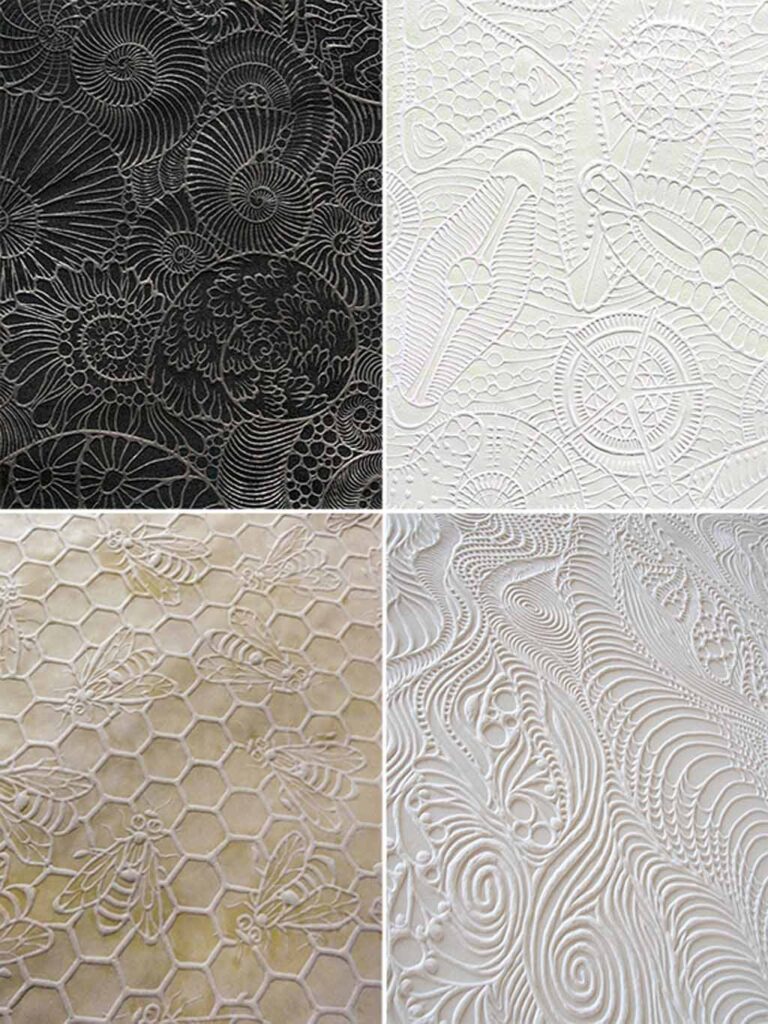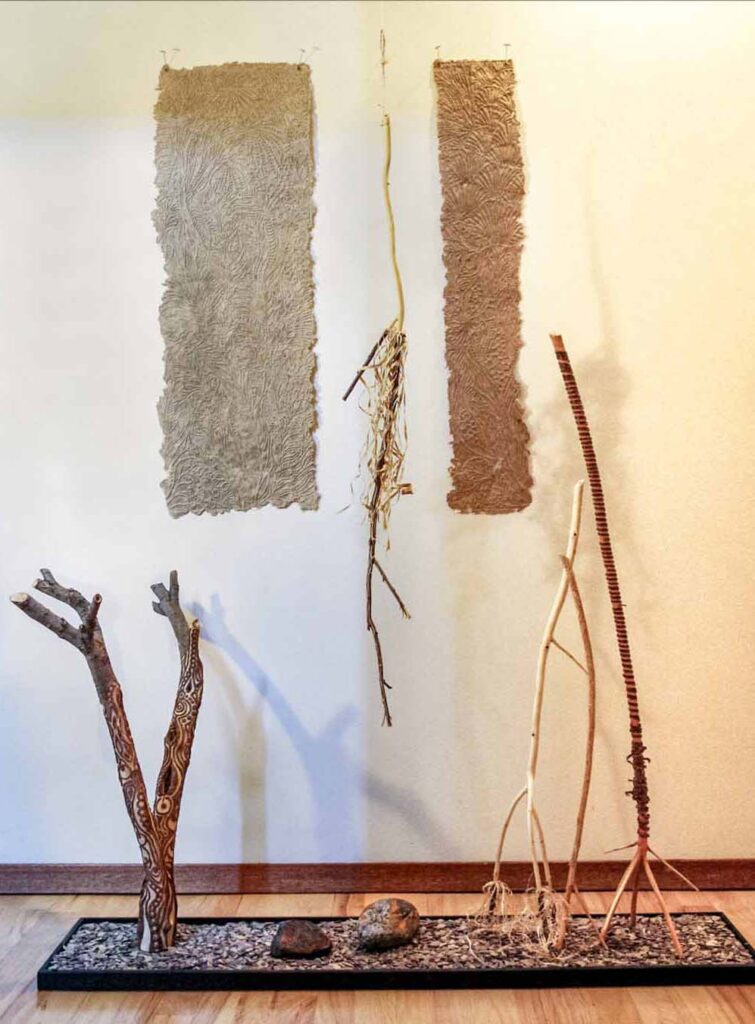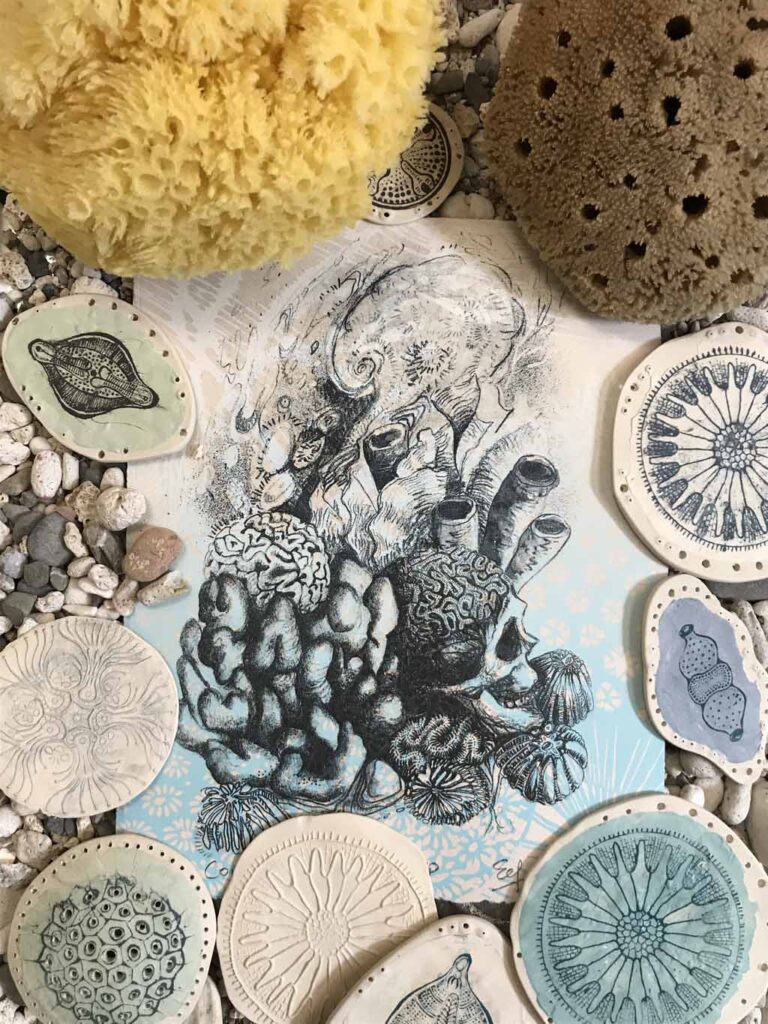USask visual artist’s online lecture focuses on how Greek mythology influences her practice

A University of Saskatchewan (USask) researcher is discussing her artistic work in an online lecture that will be hosted on the Canadian Institute in Greece (CIG) YouTube channel this month.
Prof. Allyson Glenn, a faculty member in the Department of Art and Art History in USask’s College of Arts and Science, exhibited her painting project Passages in Greece in 2019. Her virtual lecture, Conversations with the Greek Gods of Antiquity, will be featured online from June 1 – 10, 2021. Interviewed by independent curator Dr. Caterina Pizanias (PhD), the lecture will be part of a larger series featuring Canadian researchers.
For Passages, Glenn used myth as a tool to disseminate topics surrounding land, people and sustainability. Exploring an intertwining between ancient stories, archetypes and current events, Glenn and Pizanias examined how the Greek mythological past can inform contemporary issues around sites of resistance expanding on conventional notions of nation, ethnicity, identities, displacement, migration and more.
Glenn’s current (in progress) series Eclipse explores Greek sculptures, figurines and busts, found beyond Greece. Building on the idea that people brought ancient stories, sacred objects and relics with them, antiquity sculptures were amongst the objects that transcended borders.
In the virtual lecture organized by the CIG, Glenn discusses her artistic practice, the topic of allegory, Greek myth archetypes and sculptures, and provides examples of these from Greece, Great Britain and Italy.
While the COVID-19 pandemic restricts international travel, this first video is part of a larger virtual lecture series featuring Canadian researchers in the areas of archeology, anthropology and antiquity. Launched every two weeks in the summer of 2021, the series will promote outreach to the Greek and Canadian communities. The CIG is a central hub for international collaborative teams, including anthropologists and archeologists carrying out archeological digs in Greece.
Introducing Canadian Artist Eveline Kolijn

The Canadian Institute in Greece has the great pleasure to introduce Canadian multimedia artist Eveline Kolijn, on the occasion of the completion of her latest work entitled The Ocean Inside. A Canadian of Dutch roots and deeply influenced by the years she lived in Curacao, Eveline’s sensitivity and enduring interest in natural history, environment and the ocean is beautifully expressed in her new work. Eveline’s connection with Greece began several years ago when she exhibited earlier work which also alluded to her sensitivity to the environment.
Due to Covid-19 restrictive measures in place at this time, a selection of Eveline’s work is being presented online, with introductions by curator Dr. Caterina Pizanias. We hope that developments will provide the opportunity for The Ocean Inside to be exhibited in situ in Greece in the near future.
On the occasion of World Oceans Day, we invite you to enter and experience The Oceans Inside presented below.
Eveline Kolijn is a Dutch Canadian multimedia artist who soon after she acquired her MFA has increasingly been making inroads and leaving her mark amongst the artists and scientists working within the Anthropocene discourse. She has developed the temperament of a lab scientist, staying focused, paying attention to detail so much so that when any of the muses shines upon her, Eveline effortlessly tells us stories of the earth that are beautiful to see and executed in ways that bring the point of ecological crises to the forefront without invoking big, abstract concepts that intimidate the viewer to simply repress them and/or move on to the next image.
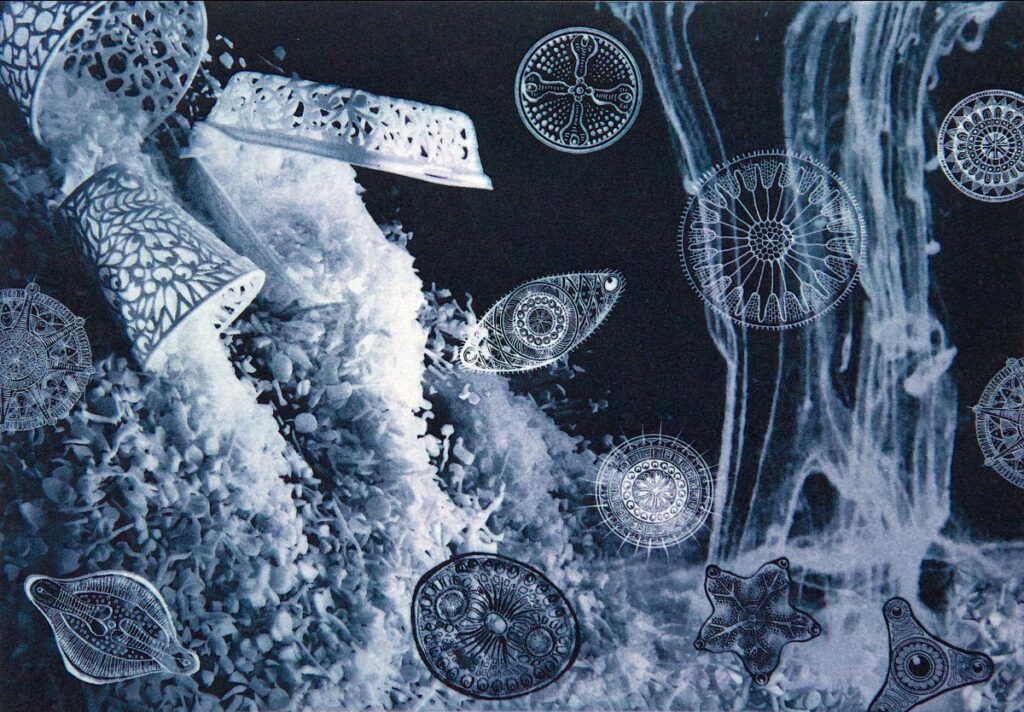
It was on the Caribbean island of Curacao where Eveline Kolijn learned to dive, fell in love with the coral reefs but also watched in horror with their continued destruction by the out-of-control oceans pollution. As a teen in the Caribbean Sea, she learned how to create taxonomies of coral, shells, fishes and recorded the man-made distraction: plastic all over the seabed, dying corals, diminishing numbers of fish. The ocean has been in her world view since childhood—she knew well the tides and the changes that were taking place due to exponential pollution of the oceans.
In her own words: “My childhood was spent beachcombing the wind-swept seashore of Venezuela and browsing through illustrated books on evolution, natural history, and seashells. I have a great affinity with naturalists and natural history. One of the original naturalists in our history was of course Aristotle. He devoted much time and effort to marine biology.”
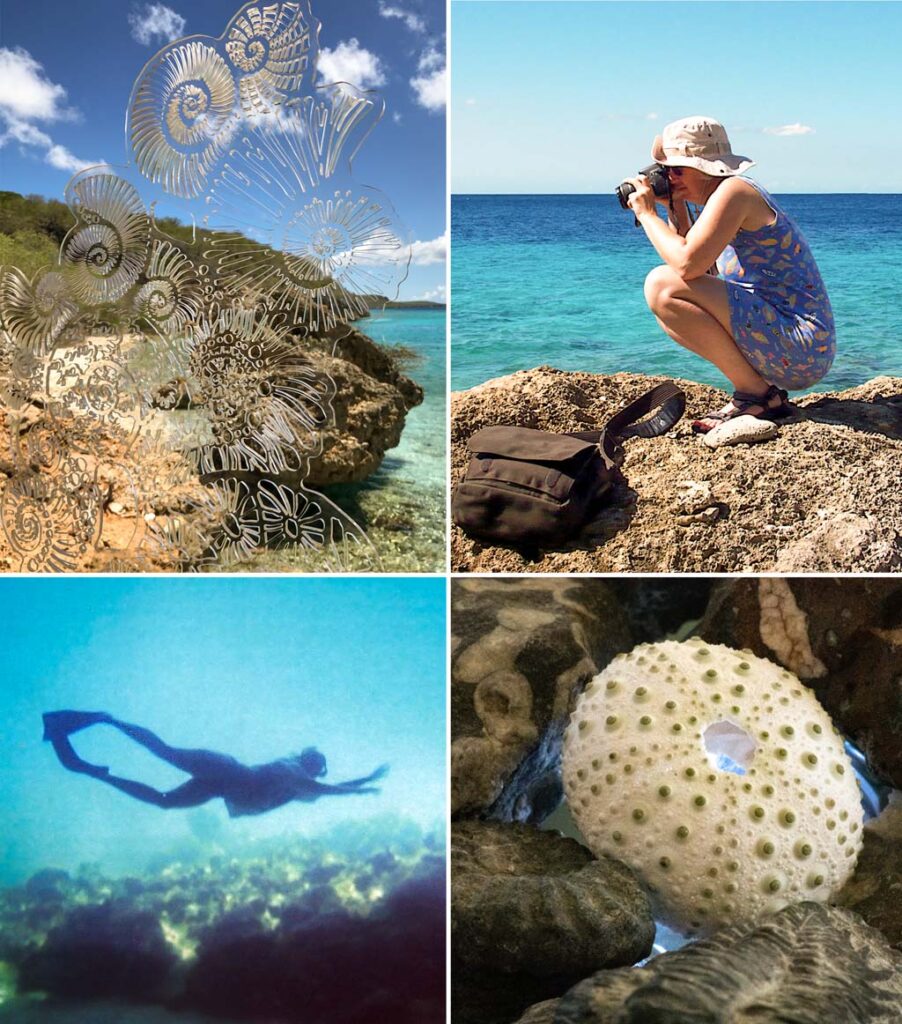
I first met Eveline Kolijn when I was visiting studios for a survey exhibition, I was curating for the Esker Foundation titled The New Alberta Contemporaries (2012). When I visited Kolijn at her studio, a perfect reflection of who she is unfolded in front of my eyes: an equal presence of artworks and a scientist’s organized files with images and taxonomies of samples from her forays into the landscape of Canada’s “oil province.” Eveline was hard at work telling the story of coral fossils she found in the Rockies, fossils that looked exactly like the coral rubble washed up on the shore that looks exactly like the fossils in the mountains.
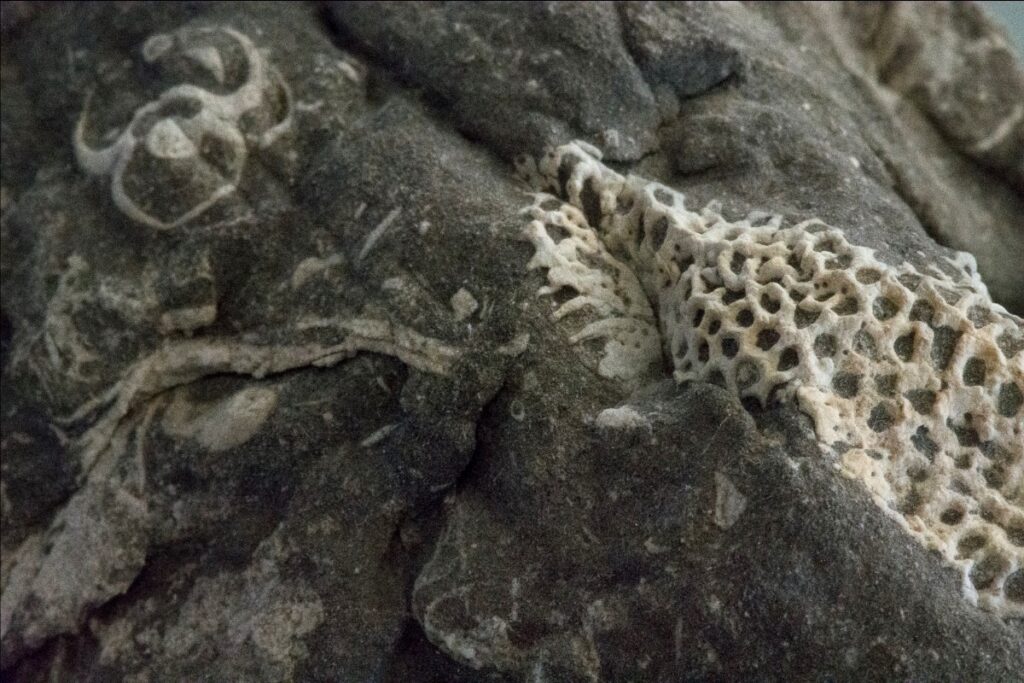

Eveline’s contribution was a mixed media installation that showcased her interest/knowledge of science, music, artistic craft, and commitment to social issues. She was inspired by the work of Timothy Morton, the philosopher of ecology whose core belief that all forms of life are interconnected in a “mesh” like system, and she coupled Morton’s mesh with Johann Sebastian’s pattern of music from his Baroque Suites: “Mesh Suites” and “Carbon Cantatas” came to life. Multimedia and multidisciplinary practice at its geo-aesthetic best.
Eveline Kolijn and I worked again on an exhibition I curated for the Vorres Museum, titled The Lure of the Local-Women Artists in the Canadian Landscape, ( 2013-14), whose aim was to provoke new ways of being in and seeing the land. Eveline Kolijn participated with a two-part multimedia installation.
A year later, Eveline Kolijn was back in Greece: she was awarded the inaugural Residency at the Vorres Museum’s Canadian Artists Annual Residency Programme. The month-long stay allowed her to become familiar with the collection—she developed an affinity with Yiannis Gaitis’ work, fellow storytellers on what ails our societies.
And she planted a seed in her mind next time she finds herself in Greece to pay a visit and meet with the sponge divers of Kalymnos in the Dodecanese.
In 2017, an exhibition took place in Vienna, curated but Stephanie Hessler titled Tidalectics, described by Hessler as “an experiment to formulate an oceanic worldview, a different way of engaging with the oceans of the world….unbound by land- based modes of thinking, the exhibition is reflective of the rhythmic fluidity of water and incessant swelling and receding of the tides.”



